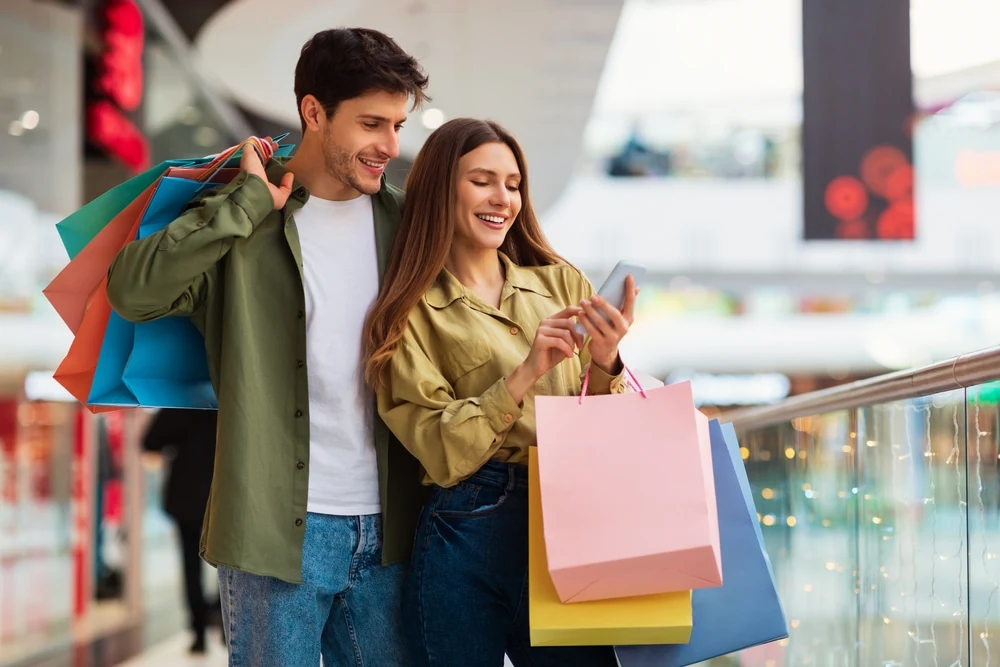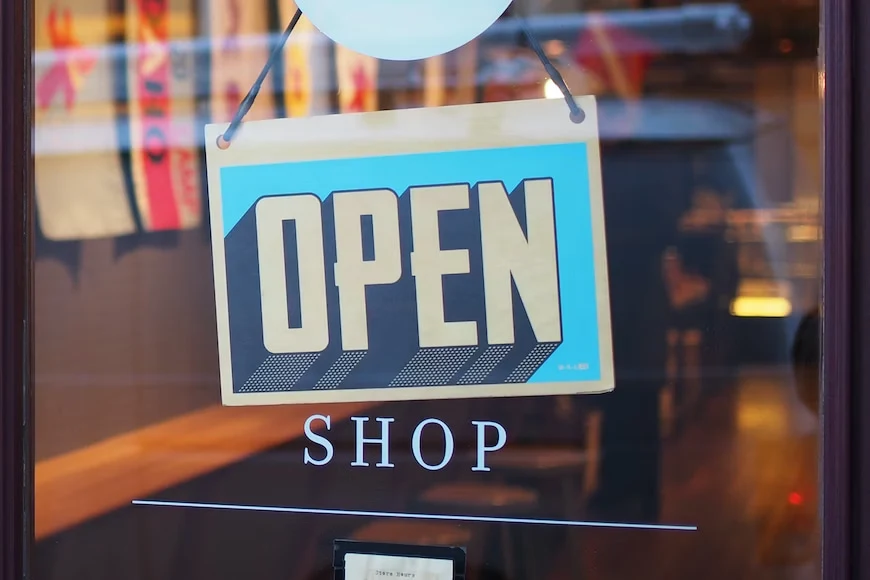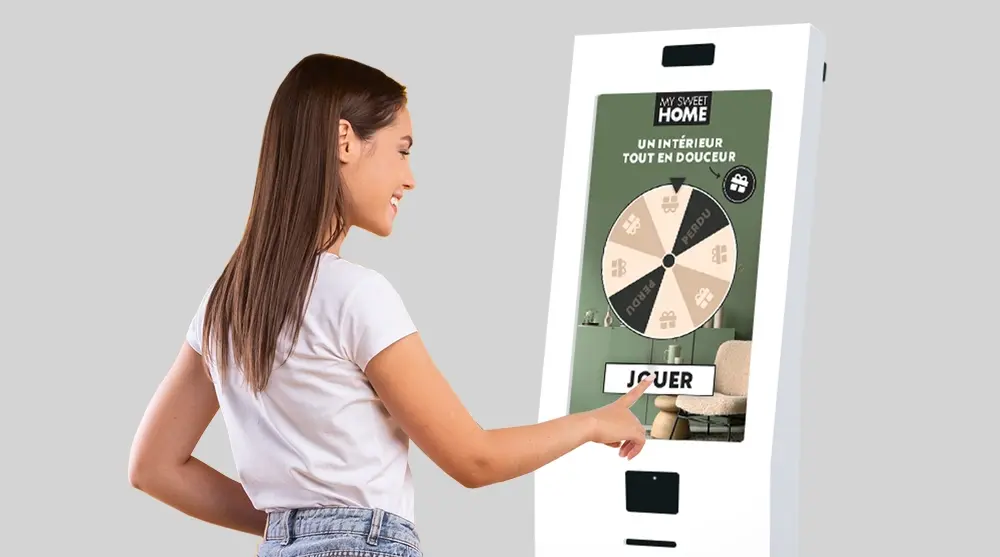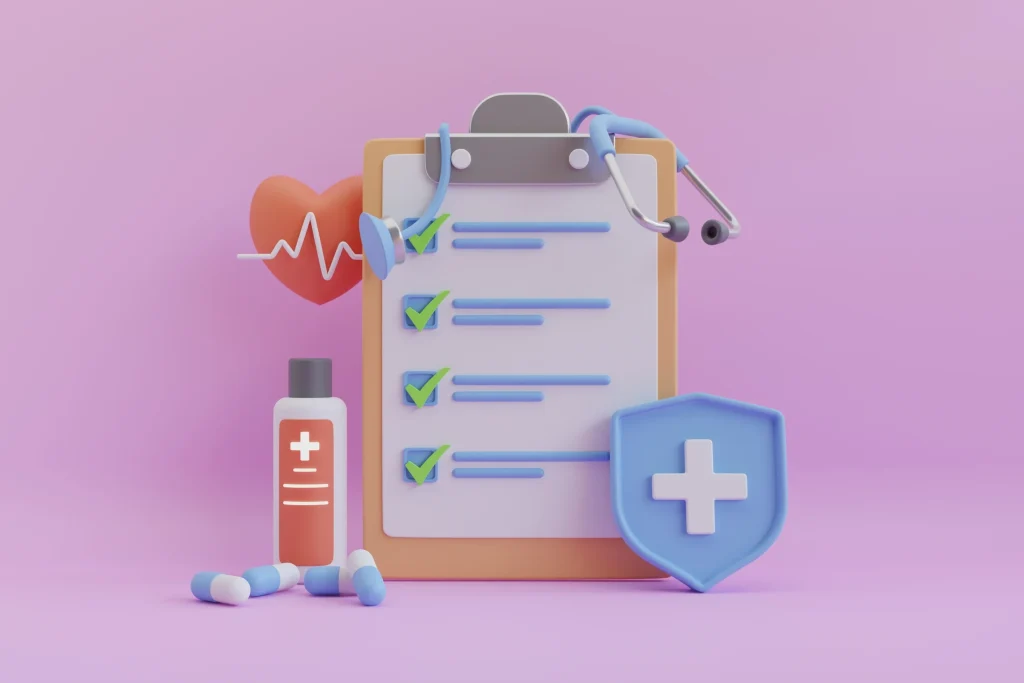
Drive to store: 4 strategies to better in-store conversions
Consumer habits have changed, particularly with the spread of e-commerce and the increase in online sales. The way in which brands reach, engage and retain their customers must therefore adapt to these new practices. One of the most crucial challenges for companies is to increase in-store traffic, in particular through drive to store campaigns.
These are an integral part of the harmonisation of the online and offline shopping journeys. In an increasingly omnichannel world, brands need to be able to engage and convert customers both in-store and online.
In this article, we present the 4 most effective strategies for attracting consumers to your shops and converting them into loyal customers.
What is drive to store in marketing?
Drive-to-store is a set of marketing strategies designed to attract online customers to physical shops. It’s an omnichannel approach that combines consumer geolocation, recommendation of the nearest point of sale and optimisation of the retail experience.
While consumer habits have tended to go digital during the pandemic, in-store shopping is not yet a thing of the past. Customers continue to embrace the retail experience, whether to discover the world of a brand, test its products, or return or exchange an order placed online.
Drive to store is therefore a central element of modern marketing, and this despite the fact that 62% of consumers say they will refuse to buy from a brand if it has no online presence. The discovery stage is increasingly carried out via digital channels, but physical purchasing has not said its last word.
A recent study shows that 72% of people who carry out a local search online will go to a shop located less than 8 kilometres away of their current location. This underlines the importance of an active online presence in redirecting qualified prospects to your points of sale.
What’s more, 28% of all local searches result in a purchase. A comprehensive omnichannel promotional campaign – one that harnesses the power of multiple channels – can help businesses attract visitors to their physical shops and generate more retail conversions.
What are the most effective strategies for a drive-to-store campaign?
An effective drive-in-store campaign therefore involves using a mix of digital and physical tools to attract and convert customers in-store. Here are the most effective ways of achieving this.
1. Localised advertising campaigns
The particularity of Drive to Store is that, to be effective, this marketing strategy needs to target consumers who live or are located close to a point of sale. Qualifying prospects is therefore a crucial element in maximising the ROI of your media budget.
A good way of achieving this is to display your ads to a geolocalised audience near a physical shop. Social networks such as Facebook, for example, have developed advertising targeting tools specifically for Drive to store. This is the case with Meta’s Store Traffic objective, which redirects users from an advertising insert to a physical point of sale.
Referencing your shops on Google Maps is another essential lever in any successful drive-to-store strategy. 86% of consumers use Google Maps to find local businesses.
2. Offer Click & Collect
The Click&Collect principle is simple. It consists of offering customers collect their online order from the nearest shop. The main advantage of this strategy is that it offers an alternative to home deliveries, which can occur when the customer is not at home. It is also a good way for consumers to save on postage costs.
For the brand, encouraging a customer who has already been won over (because they have just bought from the brand) in-store is beneficial in a number of ways. It’s an opportunity to strengthen its links with the company by immersing them in their world. This approach can also play a part in the post-purchase conversion strategy by recommending complementary offers to customers in shop.
3. Offer exceptional discounts to in-store customers
Offering exclusive discounts to consumers in-store is a simple but effective way of boosting your drive-to-store strategy.. Les soldes disponibles uniquement en retail, mais aussi les opérations de déstockage sont d’excellents leviers pour attirer ses clients dans un point de vente physique.
4. Gamification to maximise in-store conversions
Playable marketing is another excellent way of attracting consumers to the shop, but also to convert them. Broadcast online, an interactive game can, for example, enable participants to win discount or purchase vouchers that are only valid in-store.
But gamification can also be used as a lever for visibility and conversion in a physical point of sale. Whether in the form of a digital interactive terminal or tablets available at the checkout, these phygital devices make the in-store experience more attractive and fun.
Here again, it’s the opportunity to win rewards via an in-store competition that will encourage consumers to enter the point of sale and interact with the brand. Not to mention that, for the brand, it’s an excellent way of collect qualified data. It will then be able to use this data to optimise its future digital drive-to-store campaigns.
Best practice for a successful drive to store campaign
Let’s move on to the practical side. To boost the impact of a Drive to Store strategy, here’s some advice to apply before, during and after the campaign.
Before the campaign
- Targeting the right audiences based on their geolocation to boost its conversion rate. Brands should start by drawing up a list of their points of sale so that they can target the right audience. Note that it is important to consider a radius that encompasses a reasonable walking or driving time.
- Use attractive creative formats to capture consumers’ attention. Providing relevant information from the nearest shop also boosts the impact of the Drive to store campaign.
- Define the right attribution window (i.e. the length of the period taken into account before conversion, during which the contribution of marketing contact points is collected and analysed). A window of between 15 and 30 days, for example, enables you to monitor footfall in your shops and therefore focus on the most effective advertising channels.
During the campaign
Dive into granular reports. The success of a Drive to Store campaign can mean different things to different advertisers. Granular reporting tools make it possible to drill down into the data that is relevant to the brand, depending on whether it just wants to increase traffic, convert new customers, increase its re-purchase rate, build customer loyalty or build its audience.
After the campaign
Measure conversions in real time. This makes it possible to focus on 3 key KPIs: the improvement factor (i.e. the probability that a visit to a shop is motivated by the Drive to store campaign), the percentage of exposure and, in particular, the percentage of incremental visits.
Conclusion
The Drive to Store strategy is therefore the cornerstone for brands wishing to activate their prospects and customers across all their channels, both digital and physical. One of the most effective tools for strengthening the omnichannel customer journey is gamification. Discover our interactive mechanisms to increase the visibility and appeal of your points of sale.








